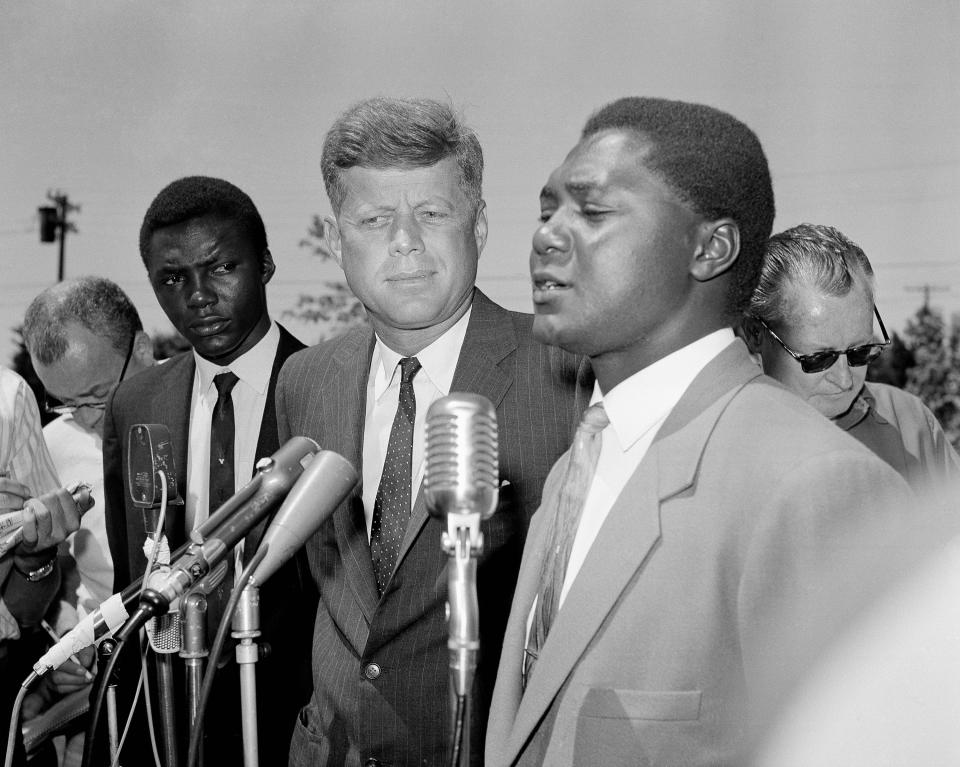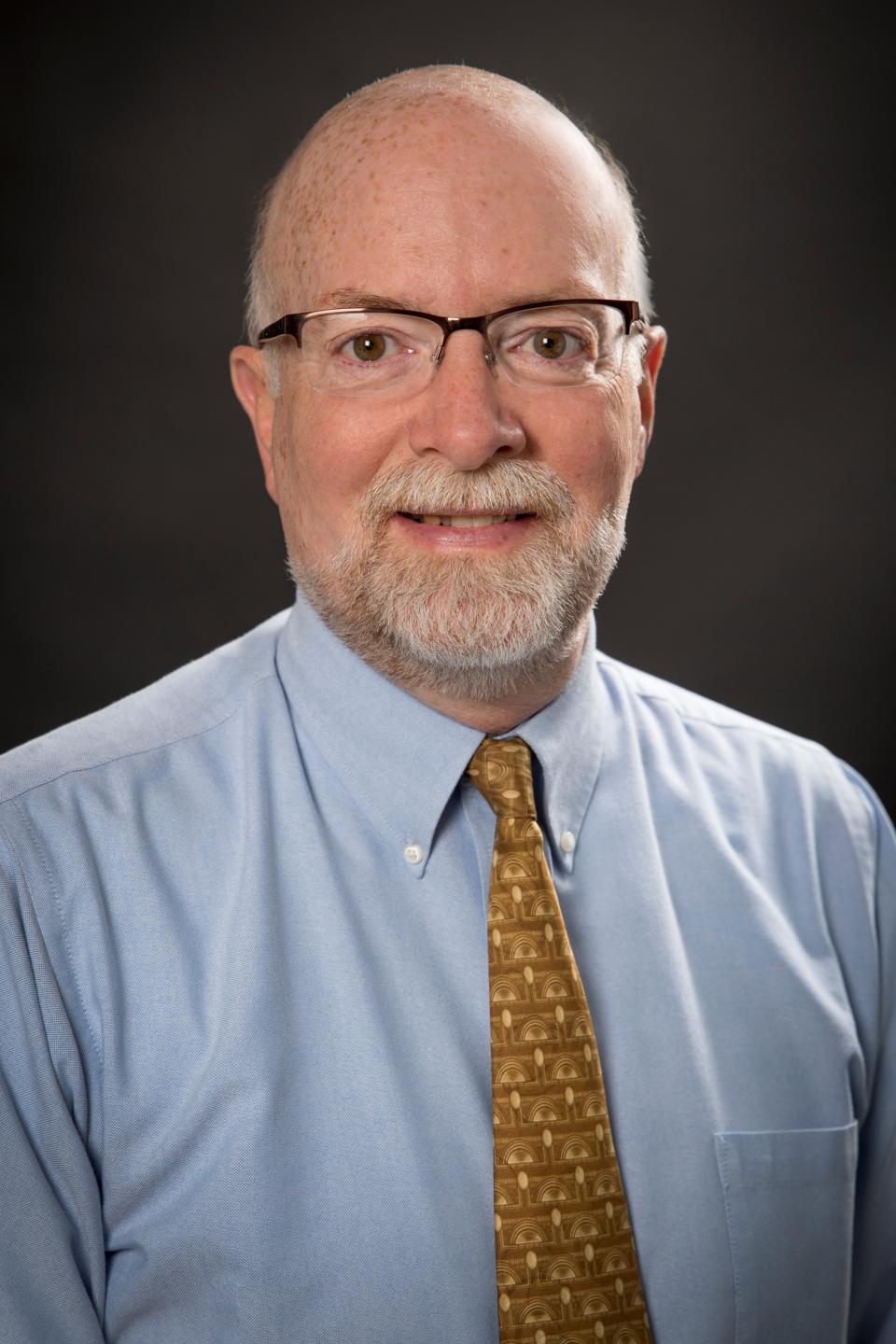Opinion: Iowa's role in African student Airlift is worth remembering
- Oops!Something went wrong.Please try again later.
- Oops!Something went wrong.Please try again later.
Sidney Poitier, Jackie Robinson, and Harry Belafonte were big fans and important fundraisers, as was a young senator from Massachusetts named John F. Kennedy. The year: 1959. The idea: charter aircraft to bring promising Kenyan students to American colleges and universities so a soon-to-be independent Kenya could have well-educated future leaders. Some 400 African students flew on these chartered flights from Kenya to the U.S. in 1959, 1960 and 1961.
A disproportionate number of the students studied in Iowa. At least 16 Iowa colleges and universities welcomed these “airlifted” students, with Morningside and Central accepting the most, followed by Iowa State, Simpson, William Penn, and Iowa Wesleyan. It’s a remarkable and largely forgotten story.
Did it work? Absolutely. Among the 400 airlifted students were future Kenyan high court judges, educators, ambassadors, cabinet members, the first director of Kenya’s national park system, a vice president, and an environmental activist who became the first Black African woman to receive the Nobel Peace Prize. Their timing was impeccable. Kenya achieved independence in 1963, just as the first batch of these students was receiving their diplomas from Drake, Loras, Grinnell, Wartburg, Graceland, Luther and elsewhere. They were the first generation of Kenya’s public service.

The idea was the brainchild of Tom Mboya, a charismatic young independence activist who eventually became Kenya’s minister of justice. He traveled to the U.S. and met with the four individuals named above, along with Martin Luther King Jr. and other civil rights figures. With the help of business leaders and philanthropists, the African American Students Foundation was formed to fund and manage this initiative. In East Africa it is known as the “Tom Mboya Airlift,” while in the U.S. it is usually called the “Kennedy Airlift” (of course). I’ll just refer to it as the Airlift. When JFK was elected president, he directed the State Department to help fund the AASF, which supported an additional 370 students from Kenya and neighboring countries who traveled to the U.S. by more conventional means.
It is often said that President Barack Obama’s father was an Airlift student. That’s not the case, but Barack Obama Sr. did receive some financial aid from AASF to help him attend the University of Hawaii. Tom Mboya’s life, like that of JFK, was tragically cut short by an assassin’s bullet. In 1969 Barack Obama Sr., who was with Mboya shortly before he was killed, testified against the assassin and was thereafter the victim of a hit-and-run incident that left him badly injured. (Some speculate it was an effort to shut down the investigation into Tom Mboya’s murder, but that’s another story.)
Why Iowa? I’ve been able to find only part of the Airlift records, so my view is somewhat incomplete. Perhaps it was because Iowa was welcoming, rural, had lots of good colleges and universities, and wasn’t governed by segregationist Democrats, like much of the South was at that time.
I came across the Airlift while teaching a class on East Africa at the University of Iowa. My class was assigned to watch the 2010 award-winning film "The First Grader," about an 84-year-old former Mau Mau independence fighter who wants to learn to read and tries to enroll in elementary school. (I highly recommend the film; it’s available on many streaming services.) I looked up the lead actor on Wikipedia and read that he graduated from the University of Iowa. Intrigued, I dug into the life of Oliver Litondo, only to find he was an Airlift student who originally went to Iowa Wesleyan. Records indicate he later attended the University of Iowa in the 1963-64 academic year. Although not a UI graduate, Litondo went on to have an extremely successful acting career.
Here's a challenge for student organizations at the colleges and universities named above. Look into whatever happened with the Airlift students who attended your schools, try to identify and contact their grandchildren, and ask them about their grandparents' time in Iowa and how it has impacted their extended family and their country. As someone who’s lived and worked in Africa for nine years, I appreciate the impact of people-to-people exchanges. This is part of Iowa’s history (and Kenya’s) that’s worth remembering.

Ron McMullen, a 1974 graduate of Northwood-Kensett High School, is a former career U.S. diplomat now teaching political science at the University of Iowa.
This article originally appeared on Des Moines Register: Opinion: Iowa's role in African student Airlift worth remembering

